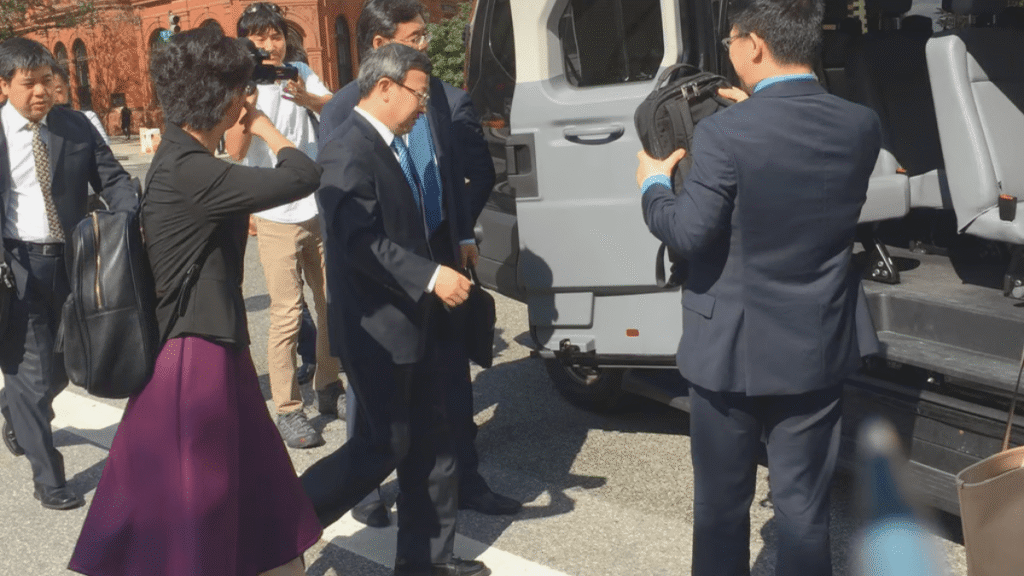A Breakthrough in Geneva: U.S.-China Trade Talks
The China tariffs saga took a hopeful turn on May 11, 2025, as U.S. and Chinese officials wrapped up two days of high-stakes trade talks in Geneva, Switzerland. Treasury Secretary Scott Bessent announced “substantial progress” in negotiations, hinting at a potential China U.S. trade deal that could ease tensions sparked by President Donald Trump’s 145% tariffs on Chinese goods and China’s retaliatory 125% duties on U.S. imports. The talks, hosted at the Swiss ambassador’s residence, marked the first high-level meeting since Trump’s tariff escalation in April 2025, which had disrupted global trade and rattled markets.
U.S. Trade Representative Jamieson Greer described the discussions as “constructive,” suggesting a deal was reached to address the U.S. trade deficit, labeled a “national emergency” by the Trump administration. Chinese Vice Premier He Lifeng echoed the optimism, noting an “important consensus” and the establishment of a new trade consultation mechanism. Both sides promised a joint statement on May 12, 2025, though details remain scarce. This development offers a glimmer of hope for de-escalation, but with tariffs still sky-high, the road to normalized trade remains long.

Market Reactions: Nasdaq Futures Surge
The China tariffs news had an immediate impact on financial markets, with Nasdaq futures rising sharply on May 11, 2025. S&P 500 futures climbed 1.31% (75.8 points), while Nasdaq Composite futures surged 1.71% (348.19 points) by 7:45 PM ET, reflecting investor optimism about a potential thaw in U.S.-China trade tensions. The market’s reaction underscores the global stakes—U.S.-China trade topped $660 billion last year, and the tariffs have threatened to double inflation to 4% by year-end, per Goldman Sachs analysts. However, some experts caution that even a reduced tariff rate of 70–80% could still halve bilateral trade, leaving businesses and consumers in limbo.
Posts on X reveal mixed sentiment among investors. Some users celebrated the market uptick, with one writing, “Nasdaq futures jumping on China tariff news—finally some good news!” Others remain skeptical, noting, “Tariffs at 145% are still a disaster for small businesses—don’t expect miracles.” The volatility highlights the uncertainty surrounding Trump’s tariff strategy, which has seen dramatic shifts, including a 90-day pause on tariffs for other nations but not China, and a recent suggestion of lowering China tariffs to 80%.
Switzerland’s Role and Global Implications
Switzerland played a pivotal role in facilitating the China tariffs talks, offering a neutral venue amid strained U.S.-China diplomacy. Swiss President Karin Keller-Sutter expressed hope that the dialogue would benefit the global economy, noting Switzerland’s own trade talks with the U.S. after Trump suspended a 31% tariff on Swiss goods. The Geneva setting also allowed both nations to project a willingness to negotiate without appearing to back down—crucial for China, which had resisted talks until the U.S. showed “sincerity” by easing tariffs.
Globally, the China tariffs have reshaped trade dynamics. China’s exports to the U.S. dropped 21% in April 2025, from $41.8 billion to $33 billion, as factories faced their sharpest slowdown in 16 months. Meanwhile, U.S. farmers have been hit hard, with soybean exports to China falling 67% in mid-April, per the U.S. Department of Agriculture. The tariffs have also driven up gold prices to $3,230, as investors seek safe havens amid economic uncertainty. Countries like Vietnam are now cracking down on Chinese goods transshipped to the U.S., hoping to avoid Trump’s 46% tariff, which was delayed for 90 days.
China’s Economic Strains and U.S. Strategy
China news paints a picture of an economy under pressure from the tariff war. Factory output in April hit its lowest since December 2023, and services activity reached a seven-month low, per Caixin surveys. Beijing has responded with stimulus measures, including a recent interest rate cut by China’s central bank, as noted in an AP post on X. Despite this, China has diversified its trade, reducing reliance on the U.S. by strengthening ties with the Global South, a move Xi Jinping emphasized at a recent summit. This strategy gives China leverage, even as it negotiates in Geneva.
On the U.S. side, Trump’s tariff news strategy aims to rebalance trade, addressing a $263 billion trade deficit with China in 2024. The administration views the tariffs as a tool to force concessions, particularly on issues like fentanyl trafficking, where tensions flared over a U.S. letter demanding action from Beijing. However, critics argue the tariffs hurt American consumers more, with Amazon CEO Andy Jassy warning that third-party sellers may pass costs onto buyers, raising prices on goods like toys and electronics.
What’s Next for China Tariffs?
The China tariffs talks in Switzerland are a step forward, but experts like Gary Hufbauer from the Peterson Institute caution against expecting a full resolution soon. The new consultation mechanism may lead to months of negotiations, similar to the 2020 Phase One deal, which failed to resolve core issues like Chinese subsidies. For now, businesses on both sides await the May 12 joint statement, hoping for clarity on tariff reductions. As the trade war’s impact ripples globally, the world watches whether this deal can ease economic strains or if the tariff standoff will persist.
See also https://scoopusa24.com/amber-heard-welcomes-twins-2025-spain/